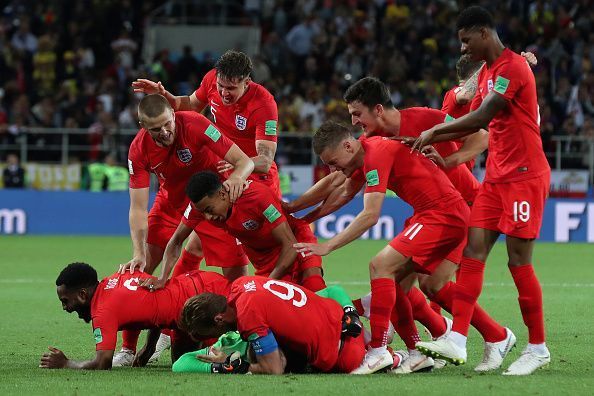
How to solve a problem like England's midfield
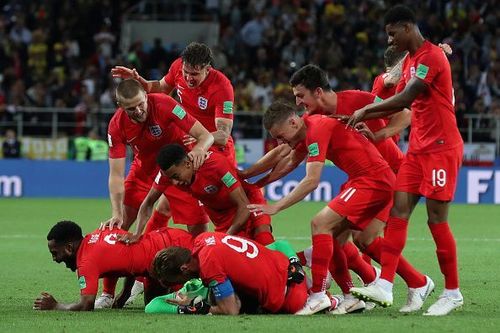
As England embark on their latest UEFA Nations League fixtures this week – both away games, against Croatia and Spain – fans of the Three Lions generally remain positive. Sure, Gareth Southgate’s side were beaten by Spain at Wembley in September, but the squad selected for the upcoming games is very different and features a number of new – mainly younger – players.
Most notably, the squad contains no less than five midfielders who didn’t go to the World Cup in Russia with England earlier this summer. It could be argued that the injuries to World Cup stars Dele Alli and Jesse Lingard are to blame for this, but that doesn’t tell the whole story.
Fabian Delph and Ruben Loftus-Cheek have also been left out – largely because of their lack of playing time thus far this season. And so alongside World Cup players Jordan Henderson and Eric Dier are Nathaniel Chalobah, Harry Winks, Ross Barkley, Mason Mount and James Maddison.
It’s an interesting mix, but it’s also one that should make England fans hopeful. That’s because it’s quite evident when you look at the styles of those players that Southgate has recognised England’s biggest weakness – the one that contributed to both their World Cup downfall and the recent Spain loss – and is looking to do something about it.
Identifying the problem
Essentially, England’s midfield problem is two-fold. Since early 2018 Southgate has favoured a 3-3-2-2 formation for his side, with three central defenders, two wing-backs and a holding midfielder, two advanced, attacking midfielders and then a central striker with another forward in support.It’d be hard to knock any of England’s World Cup squad as they clearly gave their all out in Russia and almost to a man, they performed to the best of their abilities. But as Southgate hinted at in an interview following the loss to Belgium in the third place playoff, perhaps England simply came up short because they were lacking in a couple of key areas.
While this has worked well in many ways, the system also exposes the Three Lions to some flaws. Against better teams who can dominate possession – think Croatia in the World Cup, and Spain in the Nations League – a gap appears in England’s lines between the holding midfielder and the two advanced midfielders.
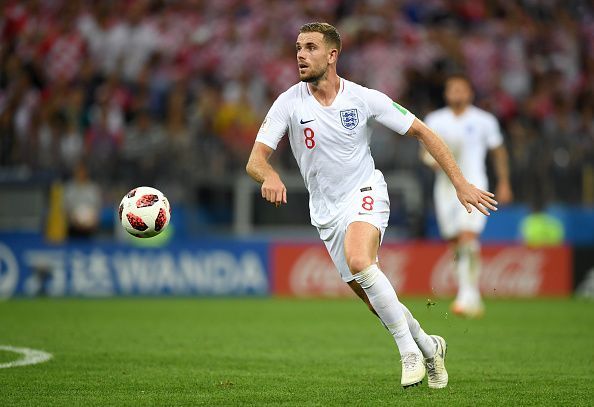
The opponents look to swarm the holding man – most recently Jordan Henderson - to prevent him from allowing England to retain the ball, and this forces him to hit long balls up the field rather than look to pick out passes. In turn, we’ve seen the central striker – usually Harry Kane – attempt to drop deeper to pick up the ball due to this, which only blunts England’s attack further.
Against weaker teams – think sides like Slovenia and Lithuania during England’s World Cup qualifiers – England enjoy the lion’s share of the ball, but against a deep defence, they struggle to find a way through. This is usually due to a reliance on the holding man to also act somewhat as a creator, as the advanced midfielders – Jesse Lingard and Dele Alli during the World Cup – aren’t the type of players capable of unlocking a defence with a killer pass.
Sure, England can usually get through these games, but with a few exceptions – Panama in the World Cup – they tend to be much more of a war of attrition than they really should be.
To use an analogy, England are often faced with a safe which has been secured with a combination lock, and due to a lack of a lock-picker, they often resort to either brute force tactics – long balls – or attempts to guess the right combination which only comes off every now and then.
So what can be done to eliminate these flaws?
A change in the system?
So too does the central striker; Harry Kane is clearly England’s key man right now and is as close to being undroppable as it gets. An able deputy is somewhat of a question mark, but that’s another article. And that means that the support striker is needed, and for all of the criticism aimed at him, Raheem Sterling has done a solid job thus far. How much longer he can guarantee that place as Jadon Sancho continues to soar is anyone’s guess, but right now the Manchester City man is fine. Clearly, England don’t need a total overhaul of their tactics and system. The three-man defence has been a massive success for the Three Lions, and the use of wing-backs has allowed England to create more chances than they did using a different system under Roy Hodgson. The personnel might change due to injuries and form, but for the most part, this clearly works.
That basically leaves the three central midfield positions to play with.
One man Southgate has clearly been desperate to bring into the fold is Watford’s Nathaniel Chalobah. A product of Chelsea’s youth academy, Chalobah has long been tipped for England success as he managed to pick up a huge number of caps – 97 – for the Three Lions’ various junior age groups.
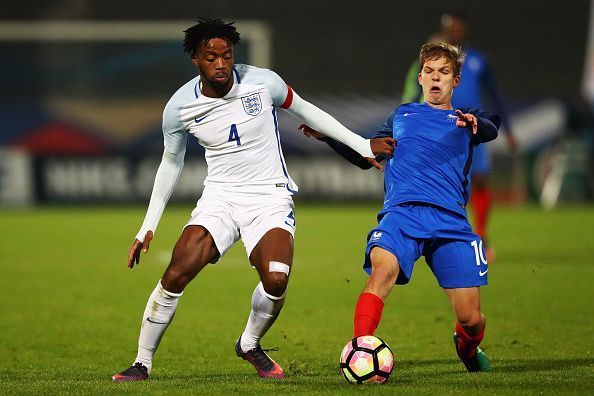
After his move to Watford in the summer of 2017, he was rewarded for his good form by a call-up to the senior squad for last September’s matches with Malta and Slovakia, but an injury ruled him out and shortly after, a fractured kneecap left him on the shelf for the remainder of the season.
Southgate clearly rates Chalobah highly – he’s a curious pick for this squad given his lack of minutes for Watford thus far this season – but as a holding midfielder who can also play in defence, he’s clearly in the squad to deputise for Jordan Henderson and Eric Dier. This may well be due to a lack of playing time for Henderson thus far in 2018/19 – and if Chalobah can break into Watford’s team and perform well, then that spot in the England squad could become his for the taking.
He’s not the solution to England’s problem though, so let’s move on for now.
Does England need a holding midfielder?
The question of England’s use of a holding midfielder – sometimes two – was a hot topic during their World Cup qualifying campaign, as many observers felt Southgate simply didn’t need to deploy one against weaker sides like Malta and Scotland. Against minnows, the argument goes, surely England’s defence have enough to keep them out – and by deploying a holding man, they are only blunting their attack.
If you go by that logic, then what could Southgate do? For all intents and purposes, discarding the holding player against smaller sides would mean removing Henderson, Dier or Chalobah from the starting 11. Perhaps one way to go would be to replace that player with a fleet-footed midfielder more comfortable in their passing range and capable of making quick runs further up the field.
The man who would fit that bill in Southgate’s current squad would probably be Tottenham’s Harry Winks, who played a similar role in his lone England cap against Lithuania in 2017. He’s proven his passing ability against the best of the best for Spurs, as he was fantastic in their win over Real Madrid last season and his stats tell a major story – an average of 68.4 passes per game in the Champions League with a success rate of 92.1%. Fellow Tottenham and England star Danny Rose has even compared Winks with the great Spanish pass master Andres Iniesta.
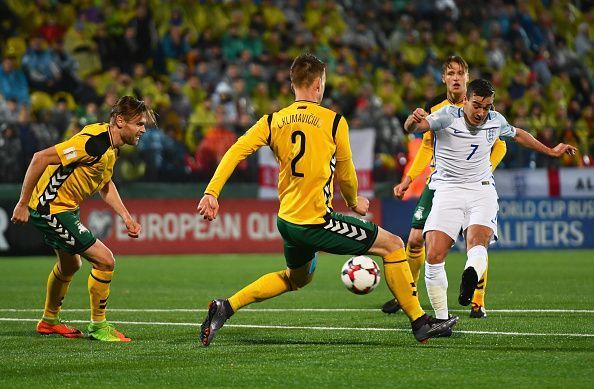
The idea of Winks using his passing range and ability to burst forward to link up with England’s more advanced midfielders like Alli and Lingard is definitely intriguing, but it must be said that the Tottenham man is only just returning from a serious injury – although he’s showing good signs of getting back to his best now.
If Winks were unavailable though, a player who could potentially move into that role would be Lewis Cook of Bournemouth, who has one England cap thus far. Cook’s stats aren’t quite as good as those of Winks, but his performances for England’s u20 side in their World Cup win suggests he has a lot of potential.
This system could work well against smaller sides, as it’d allow Southgate’s side to use their possession advantage in more of an attacking way, and would hopefully allow for more sweeping attacks utilising the front four more effectively, rather than the somewhat blunt attacks we often saw in qualification for the World Cup.
Against bigger sides though, could England cope without a holding midfielder to shore things up? The likelihood is probably not.
The Chelsea system
So could England use a variation of Maurizio Sarri’s current system at Chelsea? Sarri has utilised a 4-3-3 system this season, but in a potential England variation, we’d be looking to stick to a 3-3-2-2. Surprisingly though, I don’t believe that would make much difference in terms of the central midfield system.
Sarri’s Chelsea have deployed three midfielders in different roles; N’Golo Kante as the holding midfielder who also presses the opposition hard in order to begin attacks; Jorginho as the fulcrum of the side with his non-stop, fleet-footed passing; and a third, more advanced midfielder to join up with the attack and look to score goals. Interestingly enough, that role has been played on occasion this season by Ross Barkley – who has returned to the England fold in the current squad.
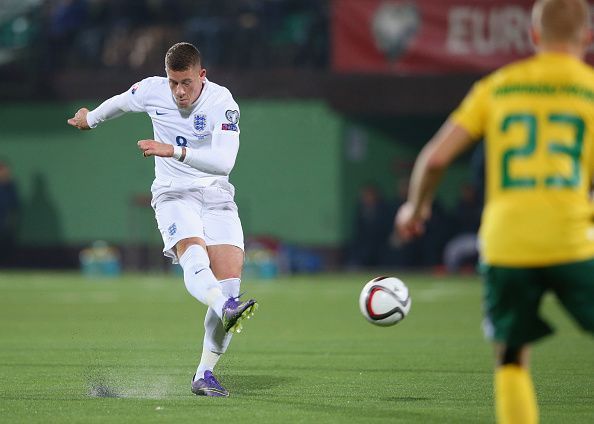
So could England utilise a system similar to this, with Henderson or Dier playing the Kante role, Winks playing the Jorginho role and Barkley – or his clubmate Loftus-Cheek, Lingard, or Alli – the more attacking role?
It’s an interesting thought, but whether a version of Sarri’s system would work without the three-man attack and four-man defence would be a question mark. Chelsea also rely heavily on the creative talents of Eden Hazard for their current system to work – and unfortunately, England don’t have a Hazard right now.
Do England have a lock-picker?
That brings us back to the idea of England needing a creative #10 – essentially a player who can pick the lock of a great team’s defence and find the killer pass that sets up someone like Kane or Sterling for a goal. During the World Cup, this issue was brought up constantly, and two names were often mentioned as players Southgate should’ve taken with him to Russia to play this role.
But Jack Wilshere and Jonjo Shelvey were left behind, and realistically, both men were left out for good reason. Southgate stated that he had concerns about Shelvey’s temperament at the international level – and to be honest, he hasn’t started 2018/19 looking like an international-class player either.
Wilshere is a more unfortunate case – he could well have played that role (or a number of other roles) but it appears that his massive list of injuries have robbed him of one of his most vital attributes – a sudden burst of pace that allowed him to dart past opponents – and he just doesn’t look as effective as he once did.
Southgate clearly recognises the need for a player of this mould though – he’s mentioned that England lack a creative player like his former teammate Paul Gascoigne on numerous occasions – and he’s picked two players who have the potential to fill that role in his current squad. Step forward James Maddison and Mason Mount.
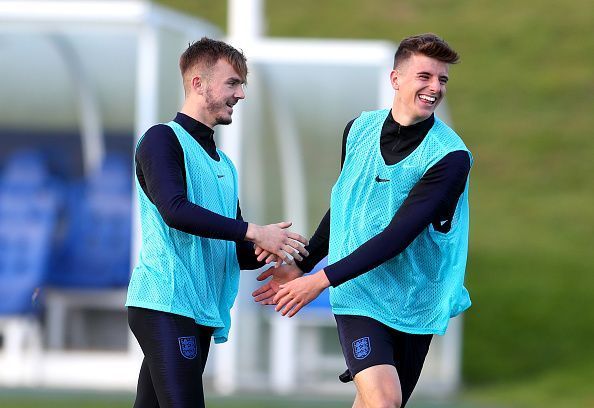
Both men have begun 2018/19 on fantastic form – Maddison has scored 3 goals and assisted in 2 for Leicester City thus far, and he’s also created more chances than any other English player in the Premier League this season. Mount meanwhile has made the most of his loan move from Chelsea to Derby County – he’s made 15 appearances thus far, has scored 5 goals and has 1 assist.
Both men seem to possess the creativity that England have lacked for so long, but are they ready for the step up? For Mount, it’s somewhat of a question mark – the Championship is a tough, physical league and the 19-year old is clearly having no issues with it, but there’s a world of difference between a Championship side and a top international team like Spain.
Maddison though has shown no issues with the step up into Premier League action and looked like the best midfielder on the pitch even against Liverpool – a side amongst the best in Europe who house tremendous talent in the middle like Naby Keita, Georginio Wijnaldum and England’s own Henderson. He’s got the kind of self-confidence that a player stepping up to the international level needs, and there’s no reason to suspect he can’t succeed for England.
Slotting Maddison – or Mount – into the #10 role would throw up another question, though; who would be the fall guy? If Southgate keeps his holding man – a must against the better sides – then it’d be one of the advanced midfielders to drop out.
If every player is fit though, perhaps an idea could be to move Dele Alli into an advanced role alongside Kane – as he’s played at Tottenham before – thus losing the sometimes frustrating Sterling instead. That’d give England a midfield line-up looking something like Henderson/Dier/Chalobah; Winks/Cook/Barkley; Maddison/Mount. Which suddenly leaves Jesse Lingard as the fall guy, and he was one of their most outstanding players in the World Cup!
So which is the way forward?
Obviously, Gareth Southgate is far more qualified than an internet writer to decide which system England should play and which players should be in the starting 11, regardless of the system. But there can be no doubt that England do need to change something – their shortcomings clearly cost them their previous games against Spain and Croatia, and the issues weren’t caused at all by a lack of effort from the players.
One thing is for certain, however – regardless of what some analysts would try to claim, England don’t suffer from a lack of talent available to them – perhaps they did a couple of seasons ago, but with new, younger stars breaking through all the time – I haven’t mentioned Jadon Sancho or Phil Foden here! – it’s clear that options are available to Southgate.
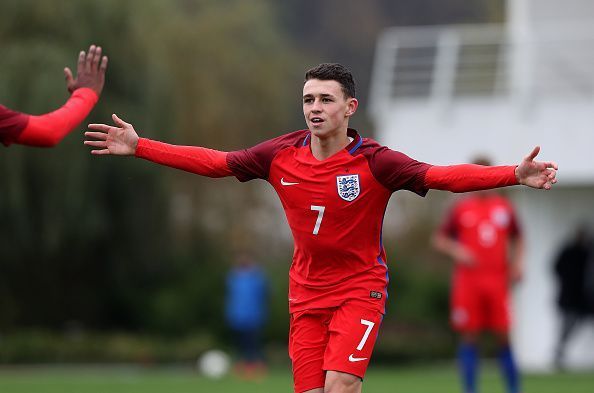
What he does with those options is a bit of a guess right now, but the positive is clearly that those options are there. And if Southgate does find the correct system to allow England to move forward and defeat elite-level opposition, then perhaps another old adage could be true – that picking the most effective players to fit into a system might not involve picking the outright best players, as such.
Interesting times lie ahead for England – and it all starts tomorrow night.